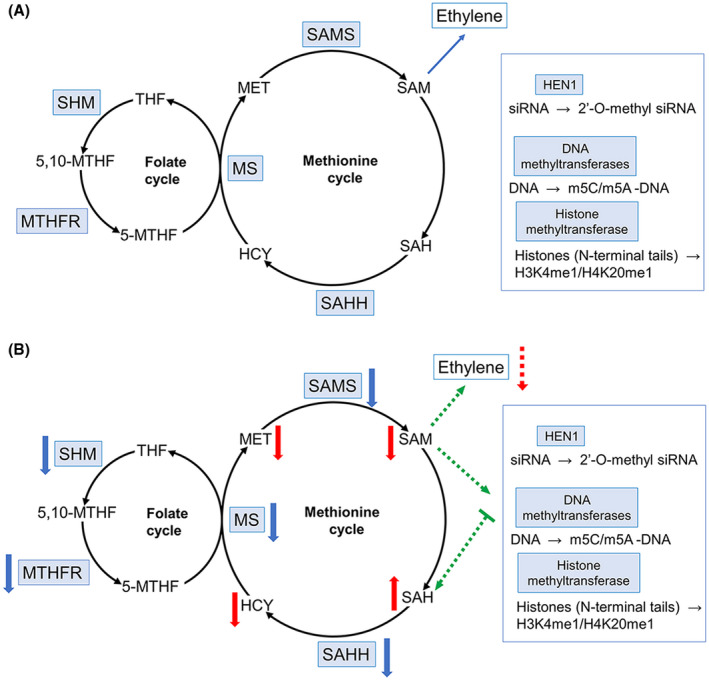FIGURE 7.

A tentative model showing possible mechanisms underlying the temperature‐sensitive susceptibility of potato plants to PVY under elevated temperature. (a) Schematic representation of the methionine cycle (MTC) in healthy cells. SAMS converts methionine (MET) to S‐adenosylmethionine (SAM), which serves as a methyl donor for transmethylation reactions of various substances including proteins, DNAs, and small interfering (si) RNAs and is also a key component for the synthesis of ethylene. The methylation reaction by‐product S‐adenosylhomocysteine (SAH) is consequently hydrolysed by SAHH to adenosine and homocysteine (HCY). Then HCY is converted back to MET by MS. (b) PVY infection at higher temperature causes down‐regulation of key MTC (MS, SAMS, SAHH) and MTC‐related folate cycle (SHM, MTHFR) enzymes, leading to the decrease of SAM and increase of SAH. This would suppress SAM‐dependent methylation reactions, including HEN1‐directed methylation of siRNAs reducing stability of antiviral siRNAs. Inhibition of DNA and protein methyltransferases may also contribute to the susceptibility response to PVY. Finally, a decrease in ethylene production may be another factor conferring increased susceptibility to PVY at higher temperatures. Decreasing and increasing levels of MTC and MTC‐related enzymes and metabolites are indicated by arrows
